1. Short Overview
The article explains how layering isn’t merely a method for staying warm but an artistic approach to enhancing style and versatility. The piece delves into the fundamentals of effective layering—balancing proportions, mixing textures and colors, and integrating accessories—while offering practical advice for seasonal adjustments and different settings, such as casual, professional, and formal environments. It also addresses common mistakes to avoid and highlights techniques for flattering various body types. Additionally, the article emphasizes sustainable and ethical practices, encouraging readers to experiment with their wardrobe creatively and responsibly.
2. Introduction to Layering
Layering is a creative fashion technique that involves combining a base, mid, and outer layer to craft outfits that are as visually engaging as they are functional. In essence, it transforms simple attire into multidimensional ensembles by playing with textures, colors, and proportions—ensuring that each layer adds depth while adapting to varying weather and occasions. This introduction explores what layering is, why it is essential for both style and comfort, and how it offers versatility across different seasons and events, setting the stage for a deeper dive into each of these aspects.
What Is Layering in Fashion?
Layering in fashion is the artful technique of wearing multiple garments on top of each other to create an outfit that is both visually dynamic and functionally versatile. Rather than simply piling on clothes for warmth, effective layering involves carefully selecting pieces that complement one another in color, texture, and proportion, resulting in a look that is both stylish and adaptable.
At its core, layering means combining several clothing items—such as a base layer, a mid-layer, and an outer shell—to build an ensemble that can be modified as needed. This approach isn’t solely about practicality; it’s about curating depth and dimension within your look. For instance, a lightweight T-shirt (the base layer) might be paired with a textured sweater (the mid layer) and finished with a structured jacket (the outer layer), each piece contributing its own color, pattern, or texture. This method of dressing allows you to express personal style while ensuring that your outfit remains functional and adaptable to changing conditions.
The Importance of Layering for Stylish and Functional Outfits
This approach not only enhances visual interest and creates flattering silhouettes, but also provides practical benefits like temperature regulation and adaptability, making it an essential strategy for both comfort and style.
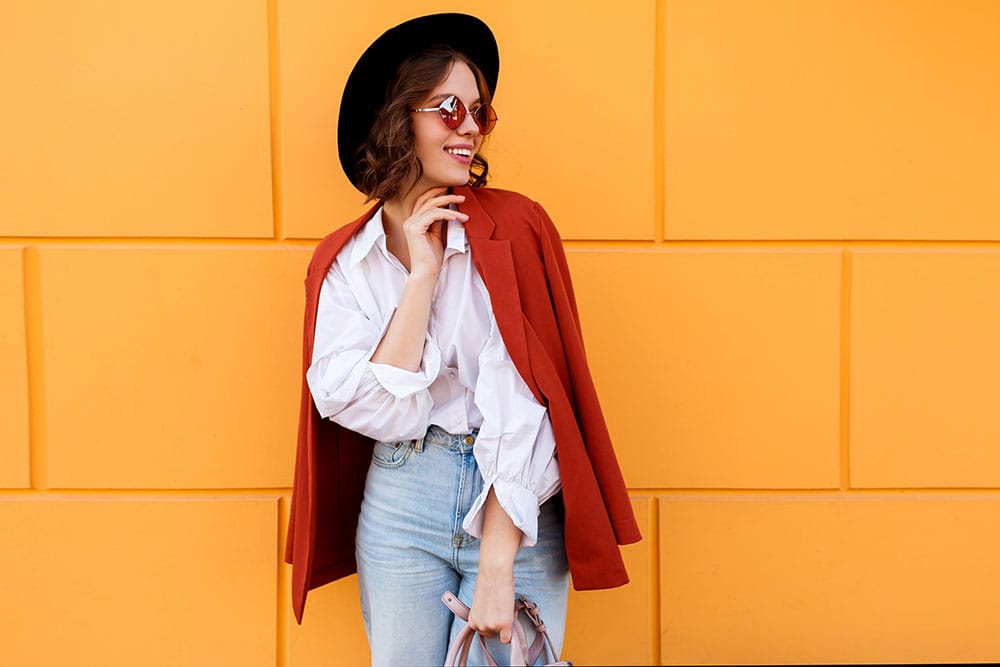
1. Enhanced Visual Interest and Depth
Layering transforms a simple outfit into a multidimensional look. By combining different fabrics and silhouettes, you add visual intrigue—each layer creates a new element of texture or color. This complexity not only catches the eye but also allows for subtle personalization, as you can mix and match pieces that reflect your unique taste.
2. Temperature Regulation and Comfort
A well-layered outfit isn’t just about aesthetics; it’s also highly functional. By utilizing a breathable base layer to wick moisture away from your skin, an insulating mid layer to retain warmth, and a protective outer layer to shield you from wind or rain, you can adapt your outfit to various weather conditions. This smart use of layers ensures that you remain comfortable whether indoors or outdoors
3. Versatility and Adaptability
One of the greatest strengths of layering is its inherent versatility. With a few carefully chosen pieces, you can create multiple looks for different occasions. For example, adding or removing a sweater or scarf can transition your outfit seamlessly from a casual daytime look to a more polished evening ensemble. Layering also enables you to extend the life of your wardrobe by mixing summer pieces with autumn or winter essentials, reducing the need for constant new purchases
4. Flattering Silhouettes
Strategic layering can help balance proportions and emphasize your best features. For instance, a well-fitted base layer combined with an oversized outer layer can create a visually appealing contrast, drawing attention to your waist or elongating your figure. This makes layering a powerful tool for not just staying warm, but also for boosting confidence through a flattering silhouette.
How Layering Enhances Versatility Across Seasons and Occasions
By mixing lightweight pieces with more robust ones, layering allows you to transition effortlessly between different climates and settings, from casual daytime wear to polished professional or evening ensembles.
1. Seasonal Flexibility:
- Spring and Summer: In warmer months, layering might involve lightweight, breathable fabrics such as a cotton tank paired with an airy, open-weave shirt. These pieces can be easily removed if the temperature rises, yet they add style and depth during cooler mornings or evenings.
- Fall and Winter: When the weather turns cold, layering becomes essential for insulation. A moisture-wicking base layer, combined with a cozy sweater and a weather-resistant coat, allows you to maintain warmth without sacrificing style. Accessories like scarves, gloves, and hats not only add extra insulation but also serve as statement pieces to complete your look.
2. Occasion-Based Adaptability:
- Casual Outings: For an everyday, relaxed look, you might layer a simple tee with a denim jacket and a casual cardigan. This creates a look that’s comfortable yet thoughtfully put together.
- Work or Professional Settings: A crisp button-up shirt paired with a tailored blazer and a lightweight vest can deliver a polished, professional appearance. The layers work together to add structure while still allowing for flexibility in a climate-controlled office.
- Evening or Special Events: Layering can elevate an outfit for formal occasions as well. Consider a chic dress layered with a fitted, statement-making jacket or cape. The strategic use of layers here not only adds warmth (if needed) but also gives your look a refined, sophisticated edge.
By thoughtfully choosing layers, you have the freedom to transition seamlessly between different environments and activities—all while expressing your personal style and ensuring practicality. Whether you’re adjusting to fluctuating temperatures throughout the day or aiming to create a look that’s uniquely yours, mastering the art of layering is an invaluable skill in modern fashion.
3. The Fundamentals of Layering
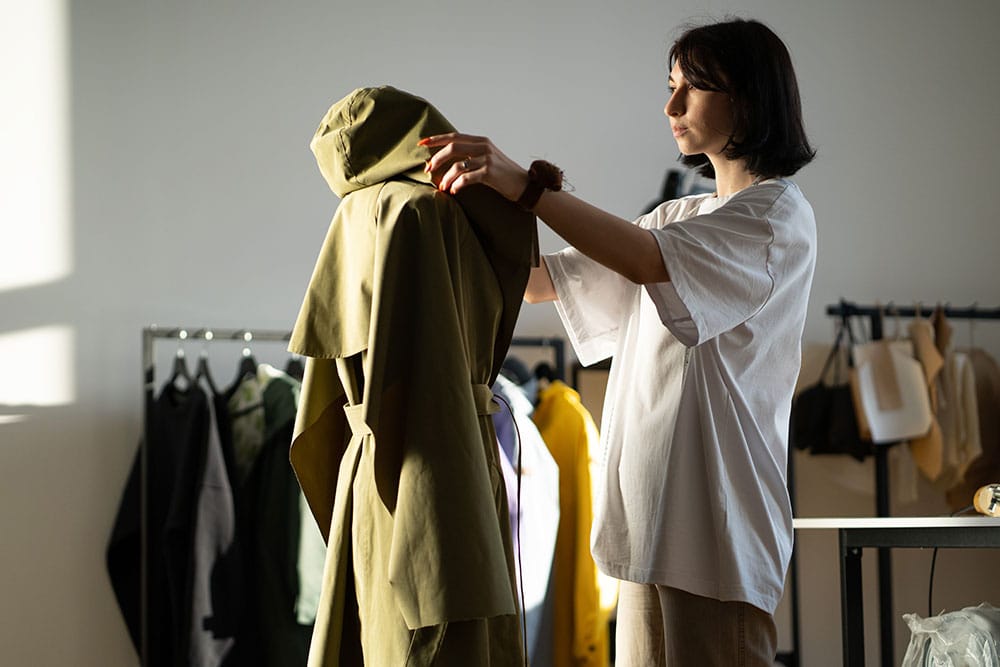
The Fundamentals of Layering delves into the essential techniques that transform a simple outfit into a cohesive, stylish ensemble. This chapter explores how understanding proportions, mixing textures and fabrics, selecting complementary colors and patterns, and thoughtfully incorporating accessories can work together to create visually dynamic and balanced looks. Each section provides key insights into building layers that are not only functional but also elevate your personal style.
Understanding Proportions: Balancing Different Clothing Lengths and Fits
This section delves into the art of balancing various garment lengths and fits to create a cohesive silhouette. It explains how combining items like long tunics with cropped jackets or fitted tops with oversized sweaters can produce a harmonious look by varying proportions and emphasizing balance.
Successful layering starts with a keen eye for proportions. The idea is to create a balanced silhouette by mixing garments of varying lengths and fits. For instance, pairing a long, flowing tunic with a cropped jacket or a fitted top beneath an oversized sweater can create an engaging, harmonious look. Key tips include:
- Varying Lengths: Ensure that no one layer overwhelms the rest. A longer base piece can be balanced by a shorter, structured layer on top.
- Mixing Fits: Combine fitted pieces (like a tailored shirt) with looser, relaxed items (such as a draped cardigan) to create contrast and maintain a flattering shape.
- Focus on Balance: When one piece is voluminous, choose a more streamlined item for the other layers. This helps to avoid a bulky or disjointed appearance.
Example: A fitted, knee-length dress paired with a longer, unstructured duster creates a chic, balanced look that elongates the silhouette.
Mixing Textures and Fabrics for Depth and Dimension
This section highlights the importance of combining diverse fabrics and textures, such as smooth silks with chunky knits, to add tactile contrast and visual interest to your layered ensembles.
Layering is your canvas for creating visual interest through texture. The interplay of different fabrics—such as smooth silks, chunky knits, sleek leather, and delicate lace—can add unexpected depth and tactile contrast to an outfit.
- Contrast is Key: Combine soft and hard textures (think a cashmere sweater with a structured denim jacket) to enrich your ensemble.
- Layering for Warmth and Visual Appeal: Different fabrics not only serve different functions (insulation vs. style) but also build a layered look that feels intentional.
- Experiment with Patterns and Weaves: Mixing a ribbed knit with a smooth, satin-like fabric can create a dynamic yet cohesive outfit.
Example: A chunky knit scarf paired with a sleek, satin blouse and a leather jacket creates a sophisticated, multidimensional look.
Choosing Complementary Colors and Patterns
Here, the focus is on color coordination and pattern selection, ensuring that each layer contributes to a unified palette where dominant and subtle elements blend seamlessly.
Color coordination is crucial in layering. The goal is to create a palette that’s harmonious while allowing each layer to stand out without clashing.
- Complementary Color Schemes: Stick to a palette where the colors either belong to the same family or are opposite on the color wheel, ensuring a balanced, unified look.
- Mixing Patterns: When mixing prints, maintain a consistent color scheme. For instance, pair a subtle stripe with a small polka dot or a muted floral print.
- Avoid Overcrowding: Ensure there’s one dominant pattern or color focal point, while the other layers serve as a neutral or complementary background.
Example: A neutral base paired with a patterned mid-layer—like a floral blouse under a solid cardigan—can add personality without overwhelming the overall look.
The Role of Accessories in Layering
This part highlights how accessories serve as the finishing touches that bring a layered outfit together. It covers the impact of items like belts, scarves, hats, and jewelry in adding functionality, structure, and style, ultimately elevating the overall ensemble.
Accessories are the final brushstrokes that complete your layered masterpiece. They not only add functionality (like warmth or definition) but also serve as statement pieces that pull your entire look together.
- Belts and Scarves: Belts can cinch the waist, adding structure to an otherwise loose layered look. Scarves add color, texture, and an extra layer of warmth while serving as a focal point.
- Hats and Jewelry: A stylish hat or a set of layered necklaces can provide balance and enhance your outfit’s overall aesthetic.
- Functional Yet Stylish: Opt for accessories that complement your layers both in texture and tone, ensuring they enhance rather than distract from your outfit.
Example: Pairing a structured blazer with a layered necklace and a statement belt can elevate your look, while a cozy hat and gloves complete an outfit that’s both functional and chic.
4. Seasonal Layering Techniques
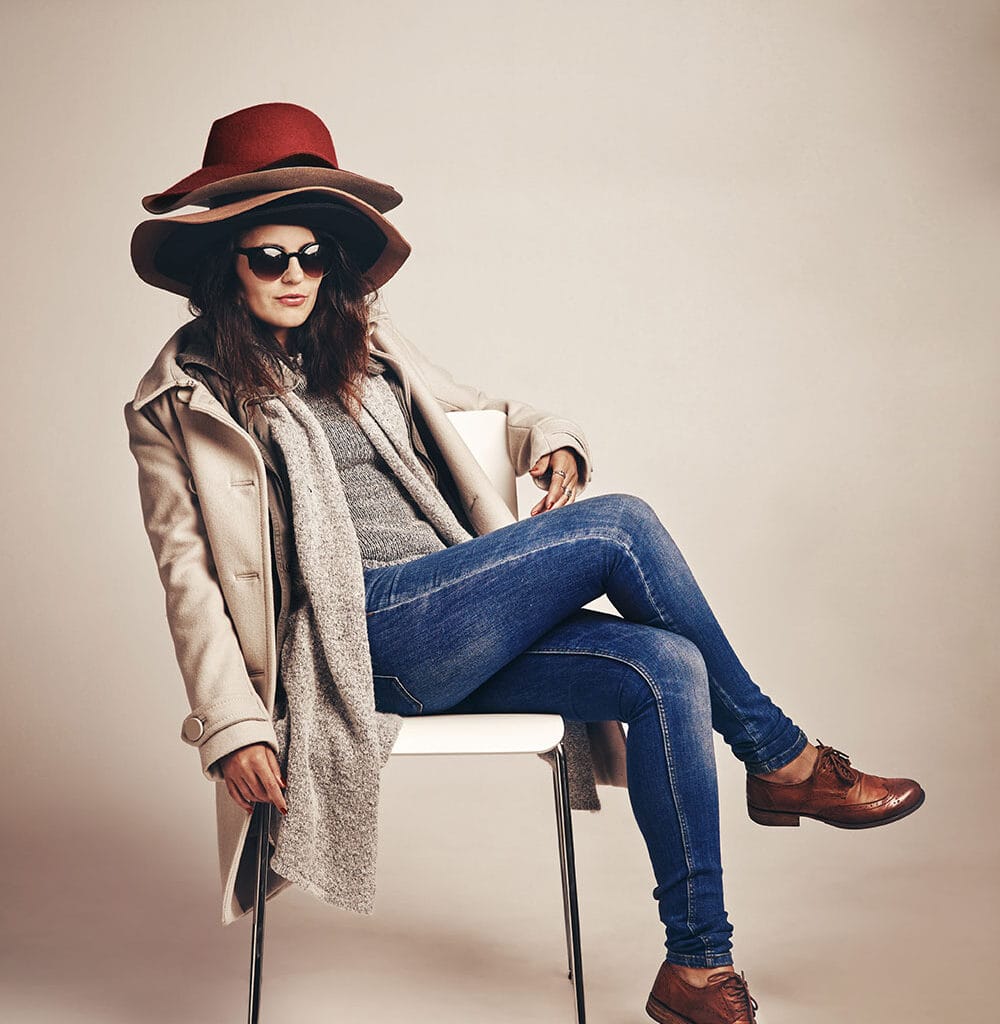
This chapter explores how to adapt layering strategies to meet the distinct demands of each season. It details methods to keep warm in the colder months, transition gracefully in spring, and maintain style and comfort during the summer heat—all while ensuring each layered look remains both functional and visually compelling.
Fall & Winter Layering Techniques
This section outlines a structured approach to layering for colder weather. It focuses on building a warm, cohesive outfit with a moisture-wicking base, an insulating mid-layer, and a protective outerwear piece, enhanced by rich textures and thoughtfully chosen accessories.
1. Core Clothing Layers & Fabric Choices
This subsection discusses selecting the right base, mid, and outer layers using fabrics like wool, cashmere, and tweeds to provide both insulation and style during fall and winter.
Fall and winter demand a structured layering system that starts with the right base, moves into a warm mid layer, and finishes with a protective outerwear piece.
- Base & Mid Layers:
Begin with a moisture-wicking base layer (think lightweight thermal tops or cotton undershirts) that keeps your skin dry. Next, add an insulating mid layer—such as a chunky knit sweater, cashmere pullover, or fleece jacket—that traps body heat. For extra warmth, choose fabrics like wool, merino, or even quilted materials that offer both insulation and texture. - Outerwear:
Complete your look with a statement coat or puffer jacket. A tailored wool coat, a waterproof parka, or an oversized puffer not only protects against wind and rain but also elevates your ensemble. Experiment with layering a long duster over shorter knitwear to create a visually elongated silhouette. - Fabric Focus:
Emphasize heavy textures and rich fabrics (e.g., velvet, chunky knits, or tweeds) that provide warmth while lending depth and contrast to your outfit.
2. Accessory Details & Styling Enhancements
Here, the focus is on how accessories—such as scarves, hats, gloves, and belts—add functional warmth and a finishing touch to elevate your cold-weather ensemble.
Accessories are the finishing touch that ties together your fall and winter look while adding extra layers of warmth and personality.
- Scarves, Hats & Gloves:
Opt for oversized, cozy scarves in bold patterns or deep autumnal hues. Pair these with statement hats (like felt fedoras or knitted beanies) and insulated gloves to complete your look. These pieces not only serve a practical purpose but also create focal points in your outfit. - Belts & Layered Jewelry:
Use belts to cinch in your outer layer, creating definition and balance in your silhouette. Layered necklaces or scarves draped over your coat can add subtle visual interest without overwhelming the outfit. - Styling Tips:
Mix different textures by pairing a sleek, modern puffer with a rugged leather accessory, or combine a soft knit with structured outerwear. Aim for a cohesive color palette—deep burgundies, earthy browns, and charcoal tones work beautifully in cooler months
Spring Layering Techniques
In spring, layering is all about transition. This section highlights how to combine lightweight, breathable garments with versatile mid and outer layers to adapt effortlessly to fluctuating temperatures while keeping your look fresh and cohesive.
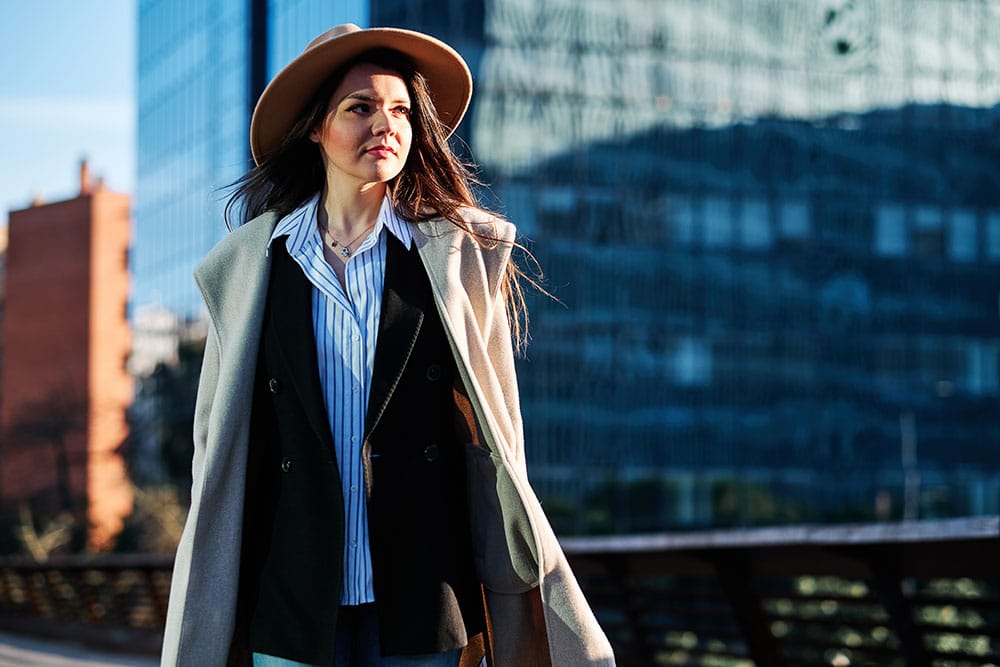
1. Transitional Clothing & Lightweight Options
This subsection covers the use of breathable base layers and adaptable mid layers like denim jackets or cardigans, perfect for spring’s unpredictable weather.
Spring’s unpredictable weather calls for adaptable layers that transition easily from cool mornings to warmer afternoons.
- Light Base Layers:
Start with a classic T-shirt, blouse, or lightweight long-sleeve top made of breathable fabrics like cotton or modal. These pieces create a smooth foundation that works well on their own or as a base for additional layers. - Mid Layers:
Incorporate versatile items such as denim jackets, light cardigans, or unlined blazers that can be easily tossed over your base layer. Look for pieces that are slim enough to wear indoors yet provide enough structure for those slightly chilly spring days. - Outer Layers:
When necessary, add a light trench coat or a windbreaker to fend off unexpected breezes or light showers. The goal is to remain comfortable without over-bundling, so opt for pieces that are both functional and chic.
2. Adaptive Accessories & Mix-and-Match Styling
Focusing on flexible styling, this part explains how to integrate lightweight accessories and mix-and-match techniques that add flair without overwhelming the outfit during transitional weather. Spring layering is as much about clever accessorizing as it is about the garments themselves.
- Versatile Accessories:
Lightweight scarves (perhaps in silk or fine cotton) add a pop of color and texture without adding bulk. Sunglasses, caps, and delicate jewelry can also enhance your look while protecting you from intermittent sunshine. - Mix-and-Match Techniques:
Play with proportions by pairing a cropped denim jacket with a flowing maxi dress or layering a fitted blouse under a relaxed blazer. Embrace a mix of textures—such as pairing crisp denim with soft knit—to create dimension. Keeping the color palette fresh and cohesive (pastels, neutrals, or subtle prints) ensures your outfit looks intentional even as you shed or add layers throughout the day.
Summer Layering Techniques
Layering in summer is about balancing protection with comfort. This section explains how to use sheer and breathable fabrics to create dynamic, sun-smart ensembles that add depth without causing overheating.
1. Core Summer Pieces & Breathable Fabrics
This subsection emphasizes selecting lightweight, airy materials—like linen and chiffon—for base pieces, paired with open-weave cardigans or kimonos to maintain a cool, layered look.
Even in the heat, layering can enhance style while providing protection from the sun without causing overheating.
- Sheer & Lightweight Fabrics:
Choose base layers made of breathable materials like linen, cotton, or chiffon. Lightweight tanks or camisoles serve as excellent foundations. Layer these with sheer fabrics—think airy kimonos or translucent vests—that add visual interest while keeping the outfit cool. - Layering with Vests & Kimonos:
Incorporate vests, lightweight kimonos, or open-weave cardigans that don’t trap heat. These pieces add a layer of dimension without overwhelming your body temperature, and they work perfectly over a simple sundress or a fitted tee.
2. Summer Styling & Functional Protection
Here, the focus is on styling for functionality, with tips on using accessories such as wide-brimmed hats and sunglasses to protect against the sun while enhancing the overall summer aesthetic.
Layering in summer is about balance—protecting your skin and adding flair without excess weight.
- Accessorizing for Summer:
Add a wide-brimmed hat, trendy sunglasses, or a lightweight scarf to provide sun protection while complementing your layered look. These accessories serve dual roles: functional sun care and style enhancement. - Creating Depth Without Heat:
Experiment with color and texture by layering a pastel sheer kimono over a bold-colored tank top or pair a light vest with a printed dress. The goal is to build a look that is dynamic and three-dimensional without adding unnecessary bulk. Consider subtle patterns or tonal layering (using different shades of the same color) to keep the ensemble fresh and visually engaging
5. Layering for Different Styles and Occasions
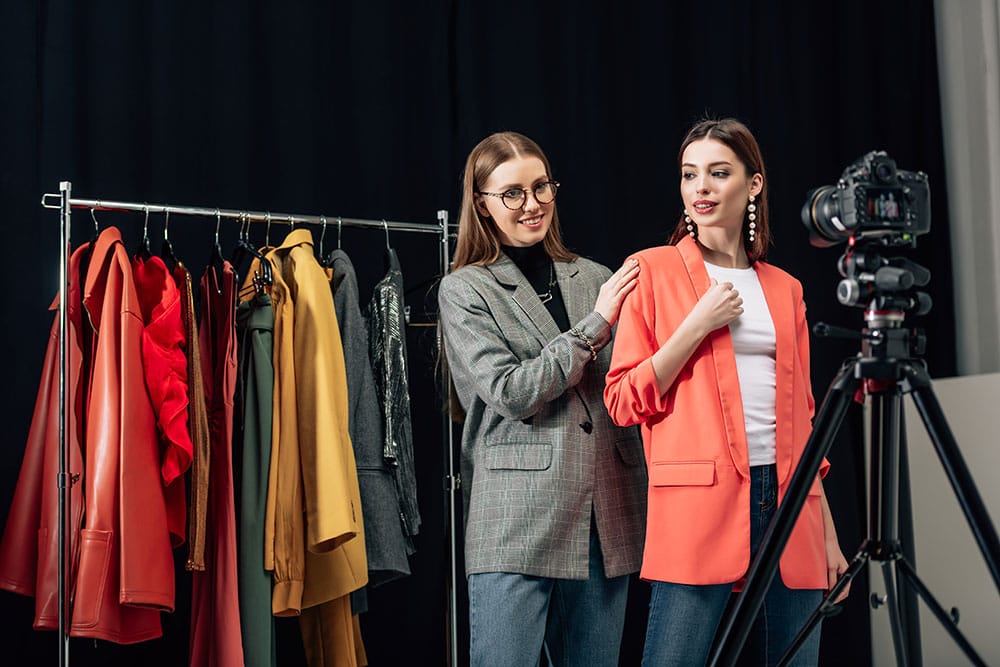
Casual Layering: Hoodies, Denim Jackets, and Sneakers
This chapter explores how to tailor layering techniques to suit various lifestyles and events. From casual streetwear to polished business attire, elegant evening ensembles to sporty athleisure looks, each section provides insights into selecting the right core pieces, textures, colors, and accessories that not only define your style but also ensure comfort and functionality for every occasion.
1. Core Garments and Textural Play
Here, the focus is on selecting foundational casual items and experimenting with different textures—like pairing a soft hoodie with a distressed denim jacket—to build a balanced, urban look.
This section delves into relaxed, everyday styles where comfort meets urban edge. It highlights how combining basic pieces like hoodies with rugged denim jackets and classic sneakers creates an effortlessly stylish, laid‑back vibe.
Casual layering is all about comfort with a touch of urban edge. Start with basic pieces like a soft hoodie or a relaxed T‑shirt as your base. Layer a classic denim jacket on top to add structure and a rugged texture that pairs perfectly with a laid‑back vibe. The key here is to choose items that balance ease of movement with visual interest. Experiment with different denim washes or even distressed styles to enhance the relaxed feel, while a versatile hoodie brings both warmth and a street‑style edge.
Example: Pair a plain, fitted hoodie with a slightly oversized denim jacket, and round out the look with a pair of classic sneakers. This mix creates a harmonious, effortless outfit ideal for weekends or casual outings.
2. Finishing Touches and Accessory Integration
This part explains how subtle accessories, such as beanies, snapback caps, or minimalist watches, can refine and personalize your casual ensemble without compromising comfort.
Elevate your casual look by incorporating simple accessories. A beanie or snapback cap can add personality, while a minimalist watch or layered bracelets bring subtle sophistication without compromising comfort. Footwear is essential—choose sneakers that not only support your everyday activities but also add a pop of color or sleek design to tie your look together. Think about mixing a sporty vibe with a touch of refinement: an athletic hoodie under a denim jacket, combined with crisp sneakers, creates a casual yet well‑thought‑out ensemble.
Business & Office Layering: Blazers, Tailored Coats, and Structured Pieces
This section addresses layering for professional settings, emphasizing the importance of clean lines and tailored silhouettes. It guides you in combining crisp base pieces with structured blazers and coats to create a polished, confident look.
1. Professional Foundations and Key Pieces
Focused on building a sophisticated base, this subsection covers how to integrate essential items—like a tailored button‑down or fine knit top—with key structured layers to ensure a refined, business‑appropriate appearance.
In a professional setting, layering should enhance your silhouette while projecting polished confidence. Begin with a crisp base—such as a tailored button‑down or fine knit top—and add a structured blazer or vest that creates clean lines. Tailored coats or trench coats serve as outer layers that not only protect against chill but also elevate your professional appearance. The trick is to choose pieces that are well‑fitted, balancing fitted blouses with slightly looser, elegantly cut outerwear to maintain a refined, business‑appropriate look.
Example: A sleek blouse under a tailored blazer, paired with a lightweight, structured coat over the top, makes for a layered outfit that transitions seamlessly between indoor meetings and chilly commutes.
2. Polishing with Accessories and Textural Contrast
This part highlights the role of understated accessories and subtle fabric contrasts in enhancing a professional outfit, adding depth and a touch of personal style without detracting from its formality.
Accessories in a business layering context are about subtle refinement. A slim belt can help define your waist under a blazer, while a pair of classic loafers or elegant pumps complete the look. Opt for minimal yet sophisticated jewelry—think a delicate necklace or a refined watch—that doesn’t distract from your overall ensemble. Additionally, consider the interplay of fabrics: pairing a smooth silk blouse with a matte, structured blazer can create a pleasing contrast that adds depth and authority to your outfit.
Evening & Formal Layering: Elegant Shawls, Long Coats, and Statement Layers
Designed for upscale events, this section reveals how to create dramatic, refined ensembles. It focuses on layering luxurious fabrics and statement pieces to achieve a sophisticated, eye‐catching look.
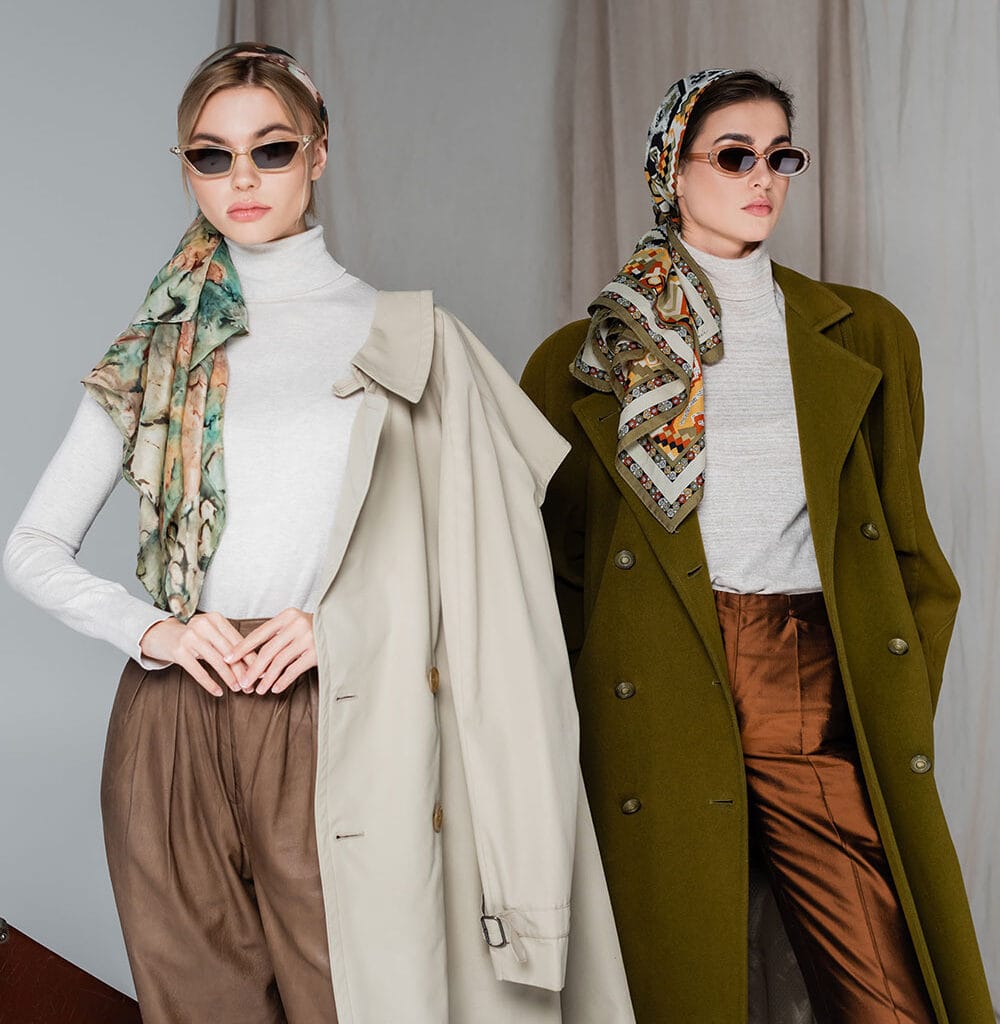
1. Elegant Statement Pieces and Luxurious Fabrics
In this subsection, learn how to select high‑quality, striking items—like a tailored long coat or an ornate shawl—that serve as the foundation for a graceful and glamorous evening ensemble.
For formal or evening events, layering takes on a more dramatic and refined role. Start with a sleek base like a fitted dress or sophisticated top, and layer with elegant shawls or capes that drape beautifully and add a touch of glamour. Long, tailored coats in luxurious fabrics (such as velvet, wool, or silk blends) serve as statement outer layers that complete your look with sophistication. The aim is to create a fluid, elongated silhouette that exudes confidence and elegance.
Example: A form‑fitting dress paired with an ornate, floor‑length coat and a delicate, embroidered shawl can elevate your evening look, making it both warm and striking.
2. Accessory Emphasis and Harmonious Detailing
Here, the focus is on fine-tuning your formal look with well-chosen accessories—such as statement jewelry and elegant footwear—that harmonize with your layered garments to complete a polished, refined appearance.
Finish your formal ensemble with carefully chosen accessories that serve as focal points without overwhelming the outfit. Consider statement jewelry like chandelier earrings or a bold cuff, and opt for a clutch that complements your overall color palette. A pair of elegant heels or refined boots can further enhance the polished appearance. The key is to allow your layers to work together to create a cohesive, luxurious look where each piece—from the soft drape of a shawl to the structured silhouette of a long coat—contributes to an overall sense of refinement.
Athleisure & Street Style Layering: Hoodies under Blazers, Oversized Fits, and Sporty Elements
This section captures the dynamic fusion of comfort and urban sophistication. It demonstrates how to blend athletic basics with contemporary outerwear to create a look that’s both relaxed and fashion‑forward.
1. Blending Casual Comfort with Urban Edge
Discover techniques for mixing sporty items, like performance hoodies or fitted tees, with oversized, structured pieces to craft an outfit that effortlessly marries comfort with modern street style.
Athleisure layering is all about juxtaposing sporty elements with contemporary, oversized silhouettes. Start with athletic basics such as a performance hoodie or fitted tee, and layer these under an oversized blazer or a relaxed bomber jacket. The combination of structured outerwear with relaxed, sporty underlayers creates a dynamic, urban look that is both comfortable and fashion‑forward. This style leverages the contrast between casual and refined, making it ideal for on‑the‑go lifestyles.
Example: Wear a high‑quality hoodie beneath an unstructured, oversized blazer, paired with joggers or slim‑fit sneakers. This mix of athletic and urban chic adds depth while remaining practical for everyday wear.
2. Urban Accessories and Modern Details
This subsection explores how to complete your athleisure look with urban-inspired accessories—such as trendy caps, sleek sunglasses, and statement sneakers—that reinforce the overall edgy yet functional aesthetic.
Complete your athleisure ensemble with accessories that bridge the gap between sport and street style. Consider adding a sporty cap or a pair of sleek, modern sunglasses to enhance the look. Footwear choices such as high‑performance sneakers or chunky soles can elevate the outfit while keeping the vibe casual. Don’t be afraid to mix proportions—try a layered look that combines an oversized tee with tailored joggers or athletic shorts, and finish with a subtle statement piece like a minimalist watch. This approach ensures your outfit remains comfortable yet stylish, perfect for both a casual day out or a trendy urban event.
Continue Reading:
The Art of Layering: Mastering Style, Comfort, and Versatility in Fashion / Part 1
The Art of Layering: Mastering Style, Comfort, and Versatility in Fashion / Part 2
Written by: Dinculescu Laurentiu
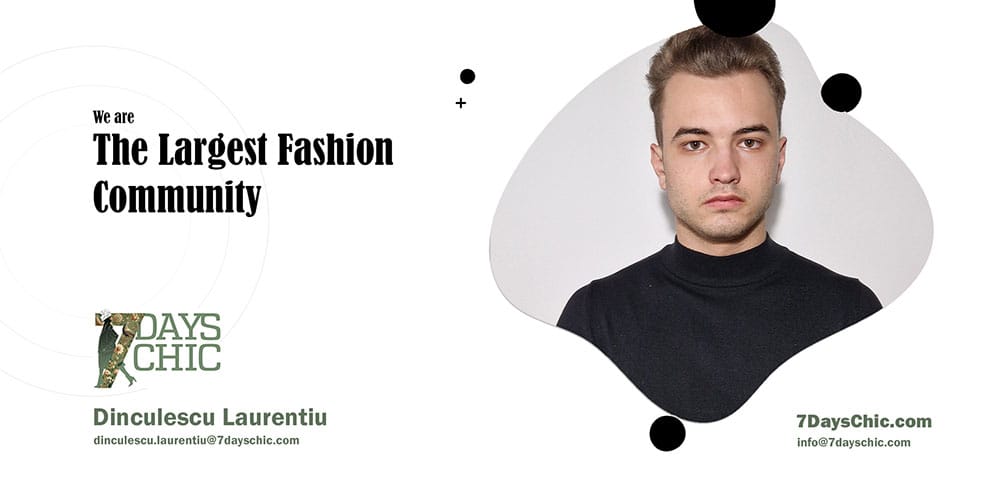


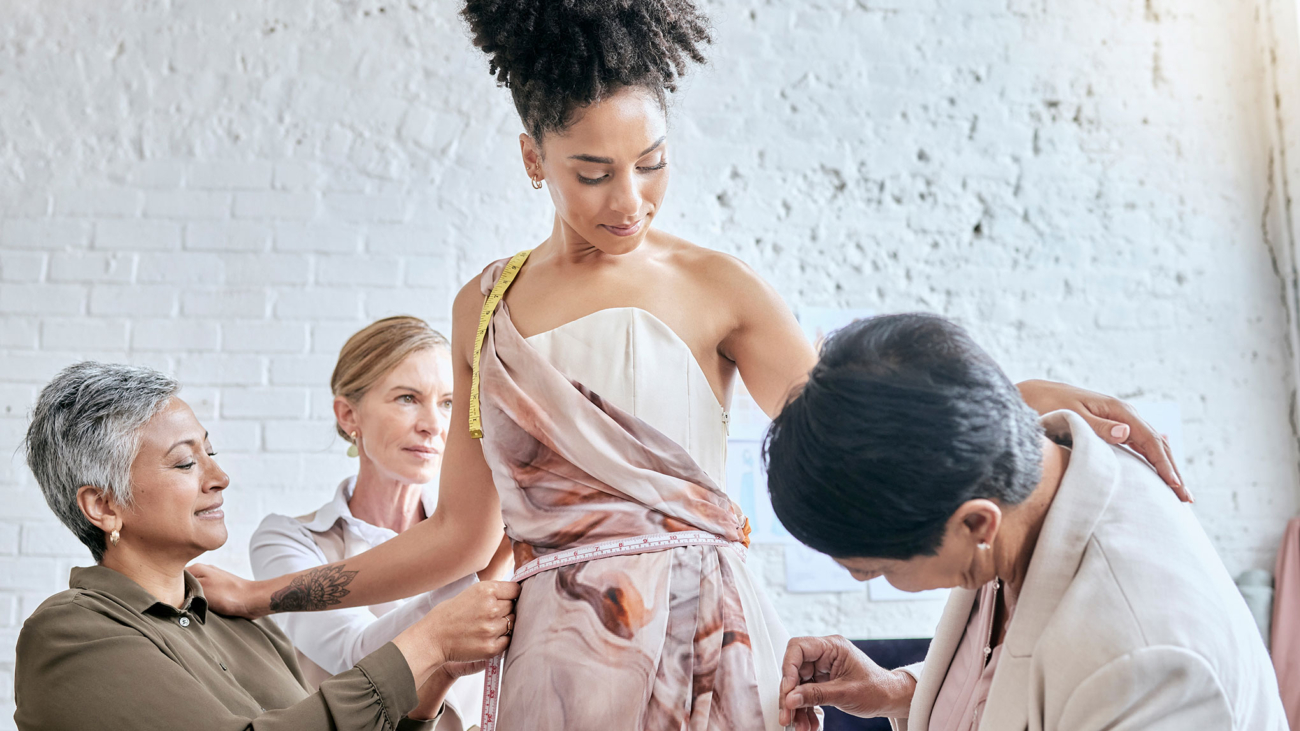
Add a Comment